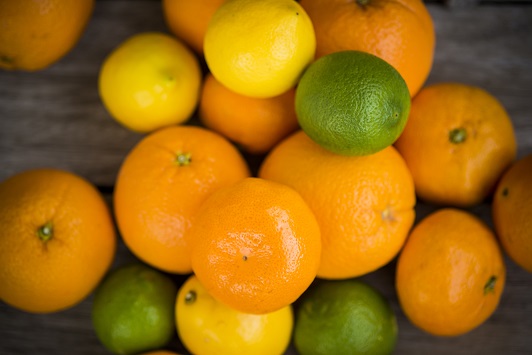Unlock free shipping
Away
We Are Taking a Short Break - Next Dispatch 12th Jan





Shop Fruit Online
It is so disappointing to find one of your favourite fruits is not ready to eat or too far gone. So, read on to find out how to know when your fruit is ripe.

Some of our favourite fruits make life easy for us with pretty clear signals that they are ready to eat (thanks bananas!) But, other fruit is a tad more mysterious. In fact, sometimes eating fruit at the right time seems to be a rather precise science - yes, we are talking about you, avocado!
Not only is it bitterly disappointing to find one of your favourite fruits is not ready to eat or too far gone, but it can also end up being a waste of money.
So, in the interest of your budget and your fruit-consuming enjoyment, we are here to give you a little extra insight. Disclaimer: we might even geek out a little on the science of ripening!
Read on to find out how to know when your fruit is ripe and ready to go.
Colour
For many of our most familiar fruits, colour is one of the best indicators of ripeness. Bananas and lemons should be yellow, oranges should be… well, orange - it's pretty straightforward. But there are also many fruits that have different varieties and end up in a range of hues. There are even some may not change colour at all.
In many cases, you will be looking for fruit that doesn’t have white or green colours (unless that’s their natural hue, of course). Alright, it is time for a bit of that geeky science we mentioned… as fruits ripen, the chlorophyll (which usually provides the green factor) breaks down, revealing the other colours beneath or creating new ones.
Scent
Sometimes you need to shut your eyes and trust your other senses. Fragrance can be a great indicator of ripeness. Think of the scent of plump, ripe, strawberries or peaches. While not all fruit will be fragrant, this can be a good indicator for something like a melon. Take a whiff of the end opposite the stem. If it smells delicious, then it is probably ready to devour!
Texture
Science alert again! When ripening is triggered, a substance called pectinase starts to break down the pectin in your fruit. In layman's terms, this means the "glue" holding the cells together is weakened, making your fruit softer.
With a gentle fingerprint test or a very tender squeeze, you can determine if your fruit is ripe. You need to consider the fruit that you are squeezing though. Some will be naturally softer than others. So, judging ripeness by touch depends on the fruit. For items without a tough skin like stone fruit, kiwifruit, avocado, pears, and most citrus, a slight give without being mushy is a good indicator of maturity.
While melons can’t be squeezed (unless you are the Hulk), giving them a gentle tap can help - they should have a hollow sound when fully ripe.
Weight
As a general rule, the heavier the fruit, the riper it is. Your fruit should feel heavier than it looks because it is bursting with delicious juice. This is particularly true for citrus fruits and tomatoes.
How Ripening Works
The ripening process is a beautiful thing when you take the time to understand it. Ethylene gas is produced, causing a chain reaction that alters the taste, smell, texture and appearance of the fruit. It is designed to make it extra attractive and mouth-watering. Remember, it’s all about the gas!
If you find that your fruit is at the perfect ripeness, but you are not ready to eat it yet, popping it in the fridge (or a cool, dark place) will usually give you a few extra days. Or if you are ready before your fruit is, try putting it in a brown paper bag to speed up the process.
As we all know, fruits ripen to their most delicious flavour when you eat them in season. Here at Twisted Citrus, we make it our mission to provide the yummiest fruit of the season. Shop our in-season selection now